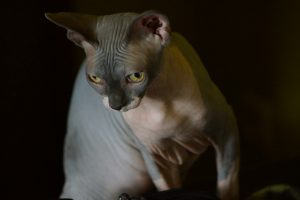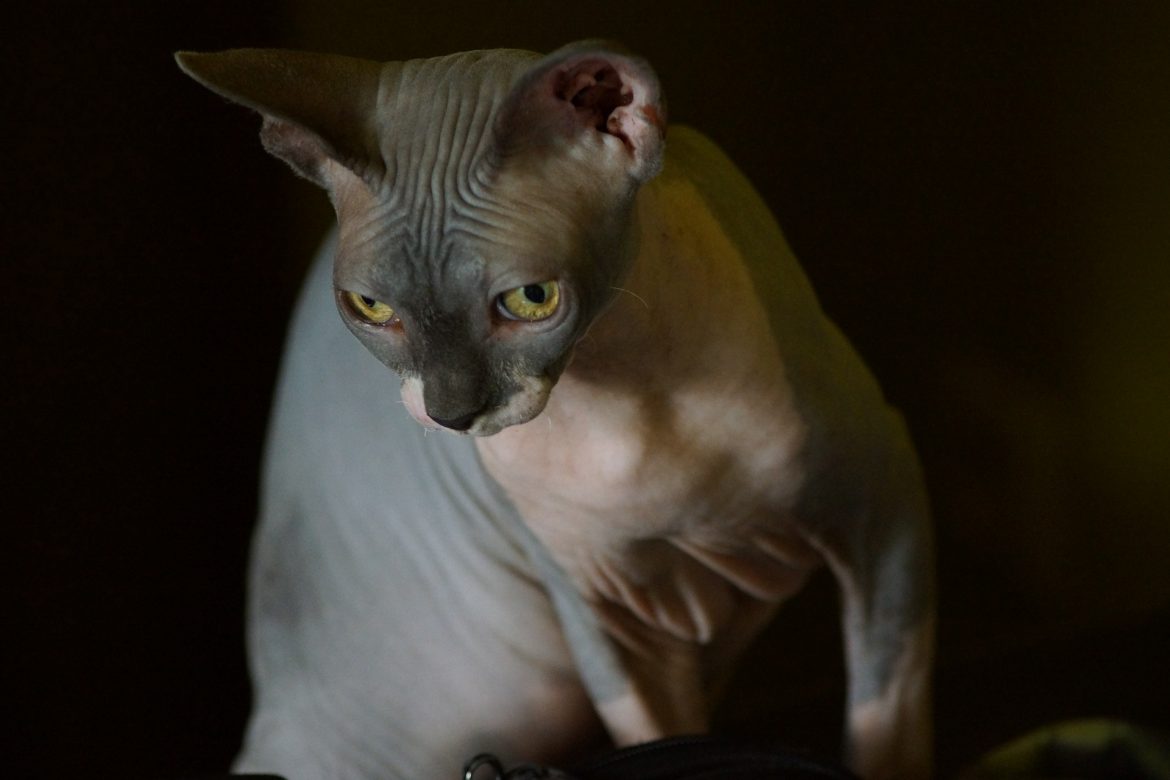Feline Ectodermal Dysplasia isn’t a phrase that many Cat Owners would be familiar with. If you own a hairless cat, though, you might have noticed the term on lists of possible health concerns. So, how bad is this condition and what should Cat Owners or Owners-to-be (as well as their trusted Pet Sitters!) know about Feline Ectodermal Dysplasia? We’ll explain it all!

What is Feline Ectodermal Dysplasia?
To understand how Ectodermal Dysplasia (ED) works, it’s important to know what the ectoderm is and what it does. Ecto- meaning outer, and -derm meaning skin, tells us that the ectoderm is the outermost layer of your cat’s skin. But there’s more to it than that. The ectoderm also refers to the outer layer of the gums; walls of the mouth; tooth enamel; sweat glands; claws; hair; nostrils; and certain parts of the nervous system. When these layers are fully formed and healthy, you’ve got a cat with strong teeth, skin, nails, and hair follicles.
Now, how about that word dysplasia? This Latin-based medical term refers to an abnormal development in the tissues. We often see dysplasia in the animal world referring to hip dysplasia, in which the hip joints aren’t properly developed. Here, it’s the ectoderm that isn’t developing quite right.
What are its implications?
Vets often notice the signs of Feline Ectodermal Dysplasia when they take a look in the mouth. With ED, some teeth might be missing while others grow in a kind of smooth, peg formation. These eye-catching chompers aren’t a huge health concern, although they might require dental work at some point. Your vet may also suggest a specialised diet and dental care plan that will keep your cat’s teeth healthy.
Other implications can make it impossible for cats with Feline Ectodermal Dysplasia to sweat. Luckily for cats, sweating isn’t their primary means of controlling their body temperature. But felines do produce some sweat through their paw pads as a secondary cooling mechanism. As such, cats with ED in hot climates may need special care to ensure they stay cool.
Finally, the other most common implication of Feline Ectodermal Dysplasia is the inability to lactate. For families who intend to spay their cat, this generally isn’t a huge concern.
While the symptoms of Feline ED aren’t usually life-threatening, this is a condition that can develop in different ways for different cats. It’s important to have a vet do a full examination to ensure that there aren’t other implications that could impact your cat’s overall health.
Which cats face the highest risk?
In general, Feline Ectodermal Dysplasia is found primarily in hairless breed cats, such as the Peterbald, Sphynx, and Donskoy. Why? Geneticists are still trying to find a definitive answer to that. But it’s likely that the trait for hairlessness is closely linked to ED.
In canine research, geneticists categorise some hairless dog breeds as a byproduct of Canine Ectodermal Dysplasia. That’s to say that these dogs are hairless precisely because they have ED.
The field of feline genetics still has some catching up to do. But the consensus is that hairless cats are the most likely breeds to have Feline Ectodermal Dysplasia.
What other animals suffer from Ectodermal Dysplasia?
As we mentioned, there’s quite a bit more research on Canine Ectodermal Dysplasia than FED. this suggests that the illness doesn’t only exist in the cat world. In fact, humans, mice, dogs, and other mammals can also develop ED, and with unique implications.
Some forms of Canine Ectodermal Dysplasia, for instance, can lead to severe and even life-threatening skin fragility, such as is the case with the Chesapeake Bay Retriever. In other cases, hairless dog breeds like the Mexican Hairless and the Chinese Crested, can develop ED which looks a lot like Feline Ectodermal Dysplasia—primarily malformed teeth, hairlessness, and the inability to sweat.
In humans, on the other hand, the lack of sweat glands is a much more troublesome symptom of ED. Being unable to sweat isn’t a huge problem for our four-legged friends, who can also rely on other means of temperature regulation. But for humans with ED, any rise in body temperature can be a serious risk.
Overall, should I be worried about my cat having Feline Ectodermal Dysplasia?
In most cases, this genetic disorder is not life-threatening to cats. But, there are a few habits that you’ll want to incorporate into your life with a cat with Feline Ectodermal Dysplasia:
- Prioritise dental health. Unfortunately, cats with this disorder are prone to a variety of dental health risks. In addition to brushing your cat’s teeth regularly, you might need to budget for dental surgery at some point in their lives.
- Ask your vet for food recommendations. Because these cats tend to have exposed gums and smooth teeth, eating dry cat food can be difficult. Your vet may recommend a raw food diet or similar soft cat food to make mealtimes more comfortable.
- Keep your cat cool. As we mentioned, these kitties aren’t able to sweat. And without sun-blocking fur coats, they’re even more sensitive to hot climates. These cats are the ideal indoor companions, especially if you’re willing to blast the air conditioning! If you’ll be leaving your hairless cat in the care of a Pet Sitter, make sure that they know to turn down the thermostat in preparation for this heat-sensitive kitty.
- Know how to identify feline heatstroke. Even if you’re able to give your cat the perfect cool snoozing environment, it’s still a good idea to know the signs of heatstroke in cats. These can include drooling, vomiting, dizziness, and a range of other symptoms that we cover in our article, Heatstroke in Cats.
Depending on what ED looks like in your unique cat, your vet may have a few more suggestions to keep them happy and healthy. But in general, with some simple accommodations, your cat with Feline Ectodermal Dysplasia can live out a normal, healthy life!

